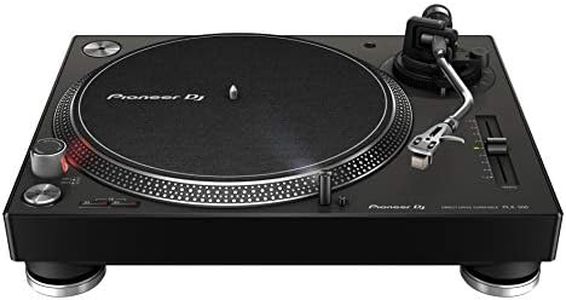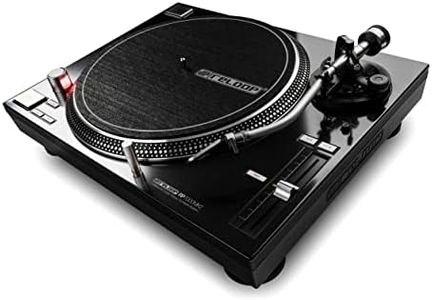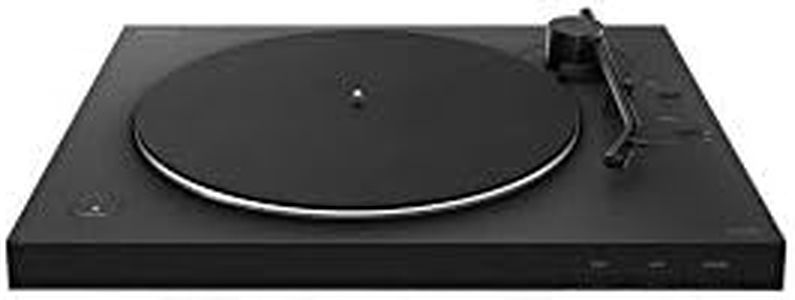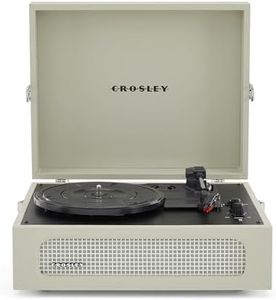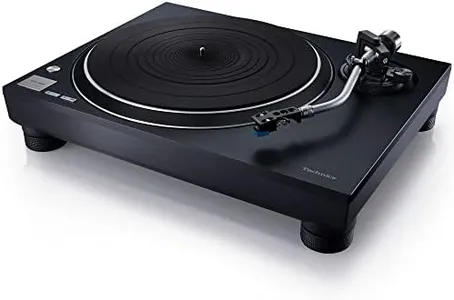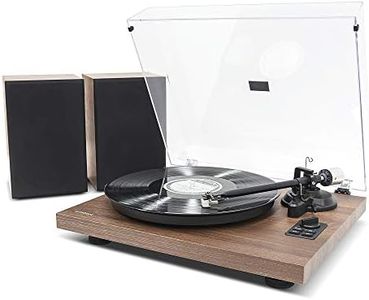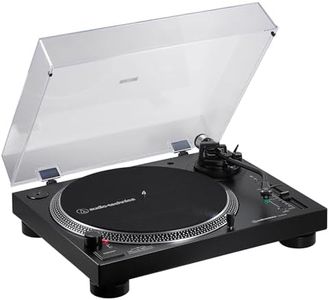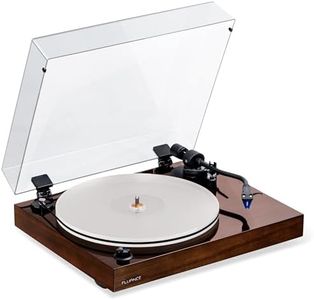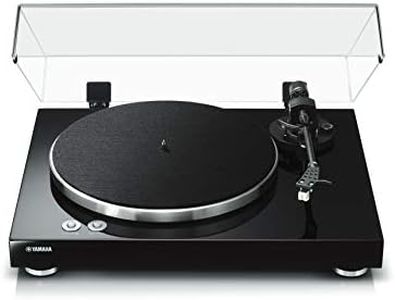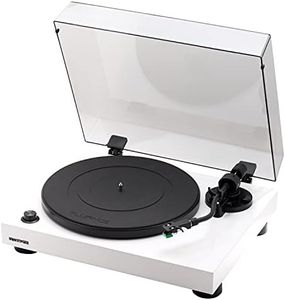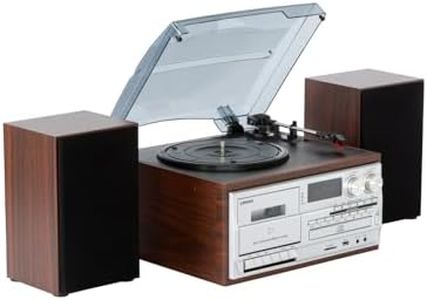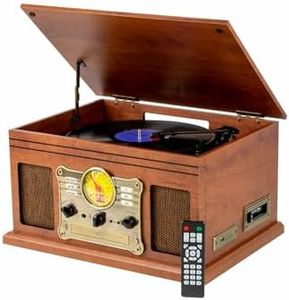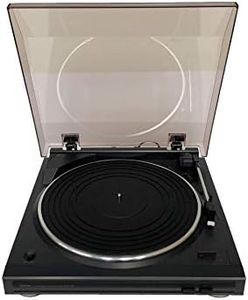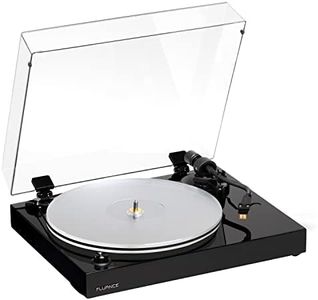We Use CookiesWe use cookies to enhance the security, performance,
functionality and for analytical and promotional activities. By continuing to browse this site you
are agreeing to our privacy policy
10 Best Turntable Stereo Systems
From leading brands and best sellers available on the web.Buying Guide for the Best Turntable Stereo Systems
Choosing a turntable stereo system can be a rewarding process, letting you enjoy your favorite records with rich and authentic sound. When picking the best option, it's important to consider how and where you'll use the system, your expectations for sound quality, and features that make listening easier or more enjoyable for your lifestyle. Thinking about the space you have, the types of music you love, and whether you just want to listen casually or are interested in higher-quality audio can help you focus on the specs that matter most to you.Turntable TypeThe turntable type refers to whether the unit is automatic, semi-automatic, or manual. A fully automatic turntable does most of the work for you, starting and stopping the record with the push of a button, which is ideal if you want a hands-off experience. Semi-automatic turntables require you to place the tonearm on the record, but they’ll return it at the end, offering a balance of convenience and control. Manual turntables require you to move the tonearm each time, giving full control and a classic feel, suitable if you enjoy being hands-on and paying close attention to your music sessions.
Drive SystemThere are primarily two types of drive systems: belt-drive and direct-drive. A belt-drive uses a rubber belt to spin the turntable, reducing vibration and often producing better sound for careful listening. Direct-drive models have the motor connected straight to the platter, resulting in faster startup times and consistent speed, which is popular among DJs or anyone who might want to mix or scratch records. For most music lovers, belt-drive is usually quieter and provides a warmer sound, while direct-drive is all about speed and durability.
Built-in Speakers vs. External OptionSome turntable stereo systems include built-in speakers, while others require you to connect external speakers. Built-in speaker models are easy to set up and great for smaller spaces or if you want portability, but generally offer modest sound quality. Systems without speakers give you the freedom to choose and upgrade your own external speakers, which is ideal if you're aiming for the best audio performance or already have a good speaker setup at home. Deciding between these options comes down to whether you prioritize simplicity and convenience or the potential for higher sound quality.
Phono PreampA phono preamp is the component that boosts the signal from a turntable so it can be played through speakers. Some turntables have a phono preamp built in, which makes setup easier and allows you to connect directly to most speakers. Others require an external preamp, either as a separate box or as a feature built into your stereo receiver. If you don't want to deal with extra equipment, integrated phono preamps are a good choice. For more control over your sound or to match high-end audio gear, you might prefer using a separate preamp.
Connectivity OptionsTurntable stereo systems can offer a variety of ways to connect to other devices, such as Bluetooth, USB, aux, and RCA. Bluetooth lets you stream vinyl records wirelessly to compatible speakers or headphones, great for flexibility and moving around your space. USB outputs are useful if you want to digitize your vinyl collection and save the music on a computer. RCA and aux ports are standard for wired listening and connecting to different types of sound systems. Think about where and how you’ll use your system—whether you want to keep things wireless, do some recording, or stick with classic wired connections—and choose accordingly.
Cartridge and StylusThe cartridge and stylus are the parts responsible for reading the grooves of the record and turning them into sound. Some systems come with a fixed cartridge, while others allow you to upgrade or replace it. High-quality cartridges can make a noticeable difference in sound clarity and detail, so being able to upgrade is a plus if you want to improve your system over time. For beginners or casual listeners, a basic included cartridge usually does the job, but if you care about getting the most out of your records, look for a system that lets you swap these parts in the future.
